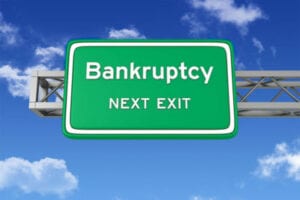Consumer Proposal Guide
Reviewed by:

Using a consumer proposal to settle your debt
When you cannot afford to repay all your debt, a consumer proposal offers a legal way to settle for less than you owe. A Licensed Insolvency Trustee helps you work out a legally binding settlement agreement with your creditors. While consumer proposals have some negative consequences, there are certain circumstances where it’s your best option to get out of debt.
In this guide, we’ll explore how consumer proposals work, their pros and cons, and the costs that come with filing one. That way, you can make an informed decision as you work to find the best solution to become debt-free.
What is a consumer proposal?
A consumer proposal is a legally binding debt settlement agreement between you and your creditors. You work with a Licensed Insolvency Trustee to determine how much debt you can reasonably afford to pay back. They then set up a payment plan that’s approved by your creditors. Once you make all the payments, your creditors discharge the remaining balances on your accounts.
Quick facts
Minimum debt required: $1,000
Maximum debt permitted: $250,000 or $500,000 for married couples
Interest charges: All interest charges freeze
Payments: Fixed installments
Maximum time to complete: 60 months
Cost: $1,500 filing fee plus 20% of your future payments
Asset protection: Yes
Negative credit impact: Yes
Is a consumer proposal right for me?
Everyone’s finances are different. However, by answering the questions below, you’ll have a good sense of whether a proposal is the right debt relief option for you.
- What is my current amount of unsecured debt?
- Does my debt exceed $250,000?
- Is it hard for me to manage my debt based on my current income and my lifestyle?
- Is there any other debt-relief option, such as credit counselling or debt consolidation, that would be better suited for my situation?
How do I qualify for a consumer proposal?
Below are the eligibility criteria for doing a consumer proposal:
- Owe unsecured debt that is less than $250,000 ($500,00 for couples)
- Be a Canadian Citizen or a resident of Canada
- You are incapable of completely settling all your debts
- Having employment or a reliable income is necessary to make your CP payments
- You cannot have an already open consumer proposal
- You must be 18 years old or older
Debts eligible for a consumer proposal

A consumer proposal can be used for most types of unsecured debt. This includes:
- Credit cards
- Lines of Credit
- Store credit cards or credit lines
- Unsecured personal loans
- Collection accounts
Other forms of debt are NOT eligible. These include:
Court-ordered debts, such as alimony or child support arrears
Student loans that are less than seven years old.
- Mortgages
- Home equity loans and lines of credit
- Car loans
How a consumer proposal works
1. Find a Licensed Insolvency Trustee
The Canadian government provides a helpful tool that allows you to find an active Licensed Insolvency Trustee based on your location. However, depending on where you live there may be dozens of trustees near you.
Take time to research trustees to ensure you will get the best service possible.
- Visit the trustee’s website to check their credentials and experience
- See if the trustee is accredited by the Better Business Bureau and how they’re rated
- Look for independent reviews online through sites like Google and TrustPilot
2. Receive a free debt assessment
Once you find a trustee, they will schedule a free debt assessment. You will need to provide information on your:
- Income
- Assets
- Liabilities (debts)
- Expenses
One of the main goals is to determine if you are insolvent. Insolvency means that you’re your liabilities outweigh your assets, and you cannot reasonably afford to repay your debt. If you are insolvent, then the trustee will recommend bankruptcy.
If you can afford to repay at least part of what you owe, the trustee will recommend a consumer proposal.
The Licensed Insolvency Trustee will help guide you through the process to determine which option, consumer proposal or bankruptcy will best suit your needs while adhering to the federal Bankruptcy and Insolvency Act.
3. Craft your proposal
Once you decide to move forward with a proposal, the trustee will help you craft it. The trustee will review your finances to determine what you can afford to pay. They will also set the term, which defines the length of time for your proposal.
Pay consumer proposals in regular installment payments. It’s usually on a monthly schedule, however, it can be less frequent depending on your financial situation. The maximum term is 60 months.
4. Get credit approval
Next, the trustee will send the draft proposal to your creditors to get their acceptance. Creditors can vote to accept the proposal, reject it, or request a meeting of creditors.
The majority rules in this vote. If the creditors holding the majority of your debt vote “yes,” then the proposal passes. Even creditors that vote “no” must honour the arrangement.
In most cases, creditors will vote to accept a proposal. It provides them with some assurance that they will get paid something, which is often favourable to the alternatives. In rare cases, you may be required to attend a meeting of creditors with your trustee. The proposal would be discussed and voted on again.
5. File your proposal
Once you receive the majority vote needed, it is then considered court-approved and held within the Office of the Superintendent of Bankruptcy (OSB).
The proposal will become part of a permanent public record held by the OSB. That may sound intimidating, but for most people, the only ones who will know you filed a consumer proposal will be you, your creditors, and your trustee.
The good part of having your proposal filed with the OSB is that a stay of proceedings is issued. This means the law protects you from any lawsuits or collection actions. Your creditors must adhere to the terms of the proposal, so you get relief from collection calls and the stress of potential lawsuits and wage garnishment.
6. Complete the payment plan
Your proposal payments begin on the day stated in your formal agreement. You make fixed payments to your trustee and they distribute those payments amongst your creditors as agreed.
It’s important to make every effort to complete your payments on time. If you miss three monthly payments or one payment by more than three months, if you’re on a different schedule, then your proposal could be annulled.
If you find you are having trouble making the payments, particularly if your financial situation changes, contact your trustee as soon as possible. You may be able to amend your proposal at no charge.
During this time and prior to discharge, you must complete two mandatory financial counselling sessions. The goal is to help you develop better financial habits so you can avoid financial hardship in the future.
7. Receive release from your debts
Once you complete all the payments and counselling requirements, you will be legally released from the debts included in it.
The creditors will discharge the remaining balances on your accounts. They will report to the credit bureaus that the balance has been paid off.
Consumer proposals and your credit
Consumer proposals will harm your credit. However, in the long run, it can help you become financially sound again.
The consumer proposal will go on your credit report. Each revolving account in the proposal will have an R7 status notation; each installment account gets an I7 notation. These notations indicate that the account was using a consolidated payment on an adjusted payment schedule.
The proposal itself and the R7 and I7 notations will drop off your credit report either three years after completing payments or six years after the date you filed, whichever comes first.
Keep in mind that while these notations will hurt your credit score, they look better to creditors than having unpaid bad debts, charge-offs, or Bankruptcy. The penalties also drop off your report faster than those for bankruptcy or private debt settlement if you complete the proposal successfully.
Consumer proposal pros and cons
Although consumer Proposals overall have their advantages, they also have their disadvantages. Below is a list of the pros and cons of this debt relief solution:
| Pros | Cons |
|---|---|
| You can get out of debt for less than the full amount owed. | Consumer proposals are more expensive than other debt-relief options, such as a debt management plan. |
| You repay your debt with one consolidated payment, which is easier to manage than juggling multiple payments. | The proposal becomes part of a permanent public record. |
| The stay of proceedings granted by filing a proposal protects you from collection acts, such as lawsuits and wage garnishment. | Paying off debt with a consumer proposal will negatively affect your credit. |
| You will get out of the unsecured debt you owe in 60 payments or less. | The agreement is legally binding, so if you break it you will not receive a refund on the fees that you paid. |
| You avoid the more severe credit damage caused by bankruptcy, debt settlement, or simply leaving your debt unpaid. | |
| You can protect assets, such as your home and car, from getting sold during bankruptcy. | |
| Once agreed upon, your payments are fixed and will not go up, regardless if your financial situation improves. |
What is the cost of a consumer proposal?
There is a financial cost for doing a consumer proposal. The federal government regulates consumer proposal costs. These are not up-front out-of-pocket expenses. They are added to the consumer proposal amount and paid out with your monthly payment.
Below are the fees associated with a consumer proposal:
| FEE | COST |
|---|---|
| Filing | $104.24 |
| Administration | $1,500 |
| Levy (LIT’s fee for creditor distribution) | 5% of each monthly payment |
| Counselling Session (x2) | $85 (each) |

Consumer proposal FAQ
Here you will find answers to some of the most frequently asked questions about consumer proposals.
Possibly. If your financial situation deteriorates, you can contact your Licensed Insolvency Trustee to try and amend the agreement. The trustee will help you assess your new circumstances to determine the new payment you can afford. Then they will reach out to your creditors to get their approval. As with the initial proposal, the amendment must be approved by a majority of the creditors holding the debts you owe. If they approve it, then the amended proposal takes effect and your payments would be reduced.
There are no additional fees for amending a consumer proposal.
Yes, but not for the same debts included in a prior proposal. If your proposal is annulled because you did not meet the terms, then you will need to find another debt solution to pay them off.
You also cannot file two proposals at the same time. If you incur new debt while you are still paying off an existing proposal, you cannot file a new proposal until you complete the first one.
However, if you have completed the proposal in the past and are now facing new financial challenges, you can file another proposal. In fact, there is no limit to the number of proposals you can file throughout your life. If you need to file a third or fourth proposal, that’s permitted. But hopefully, you will not need to go through this process again.
Yes, although time is short to revive a consumer proposal. You must remedy the default within 30 days of the annulment. You should contact your Licensed Insolvency Trustee as soon as possible. The trustee will most likely expect you to catch up on all the payments you missed.
If you can do so, and while the trustee may agree to reinstate the proposal, they will still need to get the agreement of your creditors to reinstate it.
If the 30-day window has already passed, then you can go before the court to ask them to revive the proposal. If the court agrees, then it may be reinstated.
Fortunately, if you file for a consumer proposal, you do not need to give up any assets. Your protected assets can’t be taken under provincial legislation, including your house or car. However, you will be expected over time to pay into your proposal an amount equal to the net equity in your home. Your home is yours to live in as long as you make your mortgage payments on time.
You can also keep retirement savings funds like RRSPs that have not had a contribution in the last 12 months. You may also be able to keep RESPs depending on your province of residence. Most of the time you can also keep assets that are not protected.
That’s why many decide to go with a consumer proposal.
A consumer proposal is automatically annulled if you miss three monthly payments or miss one payment by more than three months if you are not on a monthly payment schedule.
When this occurs, the terms of the agreement are no longer in effect. This means interest rates and penalties on your debts can be reinstated. Creditors can begin collection actions again and have the right to sue for your debts. If a wage garnishment was in place before the filing of your proposal, it can start again as well.
You may be able to reinstate your consumer proposal, but if that fails you would not be able to file a new consumer proposal for the same debts. You would either need to file for bankruptcy or find another solution to pay off your debts.
If you are on a monthly payment schedule, then the Bankruptcy and Insolvency Act (BIA) stipulates that you can miss or defer two payments during a consumer proposal. You should still contact your Licensed Insolvency Trustee to let them know you are having trouble.
However, if you miss three payments then your consumer proposal is automatically annulled. If you are on a non-monthly payment schedule, the proposal is annulled if a single payment is missed by more than three months.
All payments made to that point will still be credited to your accounts. However, you will not get a refund of any fees you paid. And if you wish to continue and complete the proposal, you will need to go through the process to have it reinstated.
While it’s rare, there can be cases where the majority of your creditors could reject a consumer proposal. This only happens if creditors holding a majority of your valid debt claims reject the proposal.
First, a meeting of creditors will be called by your Licensed Insolvency Trustee. This would give you and the trustee the opportunity to make your case and renegotiate, if necessary. You may be able to either extend the term of your proposal or adjust the payment schedule.
If the majority still votes to reject, then you have a few options:
- Withdraw the proposal and find a different option for debt relief, such as going through credit counselling.
Work with your trustee to file for bankruptcy.
Withdraw your proposal and file it at a later date.
The reason there has been an increase in consumer proposals over bankruptcy in Canada is because of changes made to the Bankruptcy and Insolvency Act (BIA) in 2009. The BIA raised the maximum debt amount people could file under a consumer proposal from $75,000 to $250,000. This opened up this option to many more Canadians that, previously, would have had to declare Bankruptcy. Many view proposals as a better option than bankruptcy because it’s less severe financially and fewer, if any, assets are taken away.




